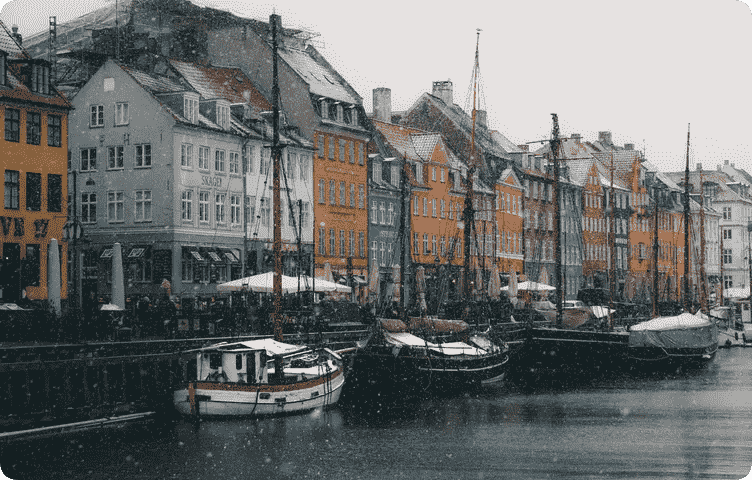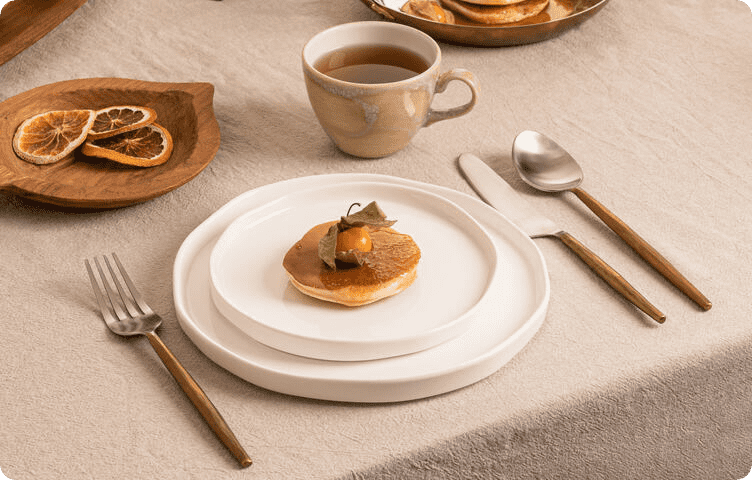Hygge is a Danish concept that has gained popularity in recent years. This word, pronounced "hu-ga", has no direct translation into Russian, but is often described as a feeling of comfort and contentment in life. The hygge philosophy is about creating a warm and welcoming atmosphere, enjoying the simple things and enjoying the present moment.
It is a way of life based on awareness, gratitude for life and unity with loved ones.
The word "hygge" comes from the Norwegian word "hygga", which means "to comfort". The word first appeared in Danish writing in the 18th century, but it was only in the 20th century that it became a popular term. The philosophy of hygge is deeply rooted in Danish culture and is considered a vital part of the national identity.
The hygge movement is credited with Denmark's consistently high ranking in the World Happiness Report, where the country has been in the top three for the past decade. Hygge is seen by the Danes as a way to embrace the long, dark winter and find joy in the simple moments of everyday life.

Today, the concept of hygge has become a global phenomenon, inspiring books, films, music and even interior design trends.
The popularity of hygge demonstrates our need for comfort and coziness in a rapidly changing world.
This philosophy is noticeably reflected in the way modern people decorate their homes, using warm lighting, cozy textiles and natural materials.
Hygge can also be seen in hospitality traditions, where the emphasis shifts to creating a cozy and welcoming atmosphere. Hygge extends to the table setting, where the focus is on creating a casual and welcoming space for sharing meals and conversation.
Table setting in this style is characterized by simplicity and natural elements. The tablecloth should be made of a natural material, such as linen or cotton, and the color should be muted and soft. The centerpiece can be a simple arrangement of flowers, dried flowers or candles, creating a warm and cozy atmosphere.
The food served on such a table should be cozy and simple. It could be a homemade soup or stew, a hearty casserole, baked chicken and potatoes, or pancakes with honey.
The center of attention on the hygge table should be healthy, satisfying food that the whole family eats.
Shared plates and family style meals are also encouraged as they promote a sense of togetherness and community.
And for dessert, you can serve warm apple pie with tea or a mug of hot cocoa with marshmallows.

When it comes to tableware, hygge style favors natural materials such as wood or ceramics. This is a great opportunity to use handmade plates or bowls to add ambience. Cutlery should also be simple and uncomplicated, rough processing and natural materials are more welcome than ever.
The new Kunstwerk tableware series - Eggshell and Polar - fit perfectly into our hygge-style serving set. The classic white color of the plates and sauce boats added light and lightness.
The warming line of hygge is supported by cutlery with gold-colored handles from the Concept No. 7 series from Venus; the deliberately careless processing of the handles fully corresponds to the given serving concept.

They are echoed by tea cups in beige shades from the Aurora Vesuvius Rose Quartz and Revolution Sandstone collections from Steelite. The glaze on these cups is applied by hand, making each piece a unique creation and fitting perfectly into the concept of hygge.
The natural colors and warm textures of the wooden bodies of the Peugeot salt and pepper grinders in the Paris Nature collection evoke unity with nature and the fact that hygge is about coziness, not glamor.

In conclusion, hygge is a philosophy that emphasizes the importance of finding joy in simple everyday things. Decorating a table setting in the hygge style is about creating a warm and welcoming space for sharing a meal and communicating with loved ones.
















































/https%3A%2F%2Fcomplexbar.com%2Fimages%2Fblog%2F131%2FServirovka_Hugge_set_552x600-ver2.png)
/https%3A%2F%2Fcomplexbar.com%2Fimages%2Fblog%2F244%2F552x600-min-round-corners.png)
/https%3A%2F%2Fcomplexbar.com%2Fimages%2Fblog%2F246%2Fwhite_szh_552x480.png)
/https%3A%2F%2Fcomplexbar.com%2Fimages%2Fblog%2F131%2FAutumn_552x600.png)
/https%3A%2F%2Fcomplexbar.com%2Fimages%2Fblog%2F246%2F2024-04-09_17.22.54.jpg)
/https%3A%2F%2Fcomplexbar.com%2Fimages%2Fblog%2F246%2F2024-04-09_17.22.47.jpg)
/https%3A%2F%2Fcomplexbar.com%2Fimages%2Fblog%2F246%2FCODE_anons_foamydrops_752%D1%85480_eng.jpg)
/https%3A%2F%2Fcomplexbar.com%2Fimages%2Fblog%2F246%2FAlina_752%D1%85480_eng.jpg)
/https%3A%2F%2Fcomplexbar.com%2Fimages%2Fblog%2F246%2F2024-04-09_17.23.22.jpg)
/https%3A%2F%2Fcomplexbar.com%2Fimages%2Fblog%2F246%2F2024-04-09_17.23.28.jpg)
/https%3A%2F%2Fcomplexbar.com%2Fimages%2Fblog%2F246%2F2024-04-09_17.23.35.jpg)
/https%3A%2F%2Fcomplexbar.com%2Fimages%2Fblog%2F246%2Fdrinksome_752%D1%85480_eng.jpg)
/https%3A%2F%2Fcomplexbar.com%2Fimages%2Fblog%2F246%2Fnude_752%D1%85480_eng.jpg)
/https%3A%2F%2Fcomplexbar.com%2Fimages%2Fblog%2F246%2F752%D1%85480_eng__1_.jpg)
/https%3A%2F%2Fcomplexbar.com%2Fimages%2Fblog%2F246%2F752%D1%85480_eng.jpg)
/https%3A%2F%2Fcomplexbar.com%2Fimages%2Fblog%2F246%2FStudioRaw_752%D1%85480_eng.jpg)
/https%3A%2F%2Fcomplexbar.com%2Fimages%2Fblog%2F246%2FDoppio_tea_752%D1%85480_eng.jpg)
/https%3A%2F%2Fcomplexbar.com%2Fimages%2Fblog%2F246%2FTognana_Stars_Stripes_752%D1%85480_eng.jpg)
/https%3A%2F%2Fcomplexbar.com%2Fimages%2Fblog%2F246%2FRona_752%D1%85480_eng.jpg)
/https%3A%2F%2Fcomplexbar.com%2Fimages%2Fblog%2F246%2FDoppio_vending_752%D1%85480_eng.jpg)
/https%3A%2F%2Fcomplexbar.com%2Fimages%2Fblog%2F246%2FEssence_sukhie_smesi_752%D1%85480_eng.jpg)
/https%3A%2F%2Fcomplexbar.com%2Fimages%2Fblog%2F246%2FODK_sukhie_smesi752%D1%85480_eng.jpg)
/https%3A%2F%2Fcomplexbar.com%2Fimages%2Fblog%2F246%2Funiforma-barmena.jpg)
/https%3A%2F%2Fcomplexbar.com%2Fimages%2Fblog%2F246%2Fkak-nanyat-barmena.jpg)
/https%3A%2F%2Fcomplexbar.com%2Fimages%2Fblog%2F246%2Fsirop_scale_2400.jpeg)
/https%3A%2F%2Fcomplexbar.com%2Fimages%2Fblog%2F246%2FPeugeot_Anons_Paris_U%27Select_Line_Daman_752%D1%85480_eng.jpg)
/https%3A%2F%2Fcomplexbar.com%2Fimages%2Fblog%2F246%2Fkofe-vostochniy.jpg)
/https%3A%2F%2Fcomplexbar.com%2Fimages%2Fblog%2F246%2FMadler.jpg)
/https%3A%2F%2Fcomplexbar.com%2Fimages%2Fblog%2F246%2Fprofbartender_glavn.jpeg)